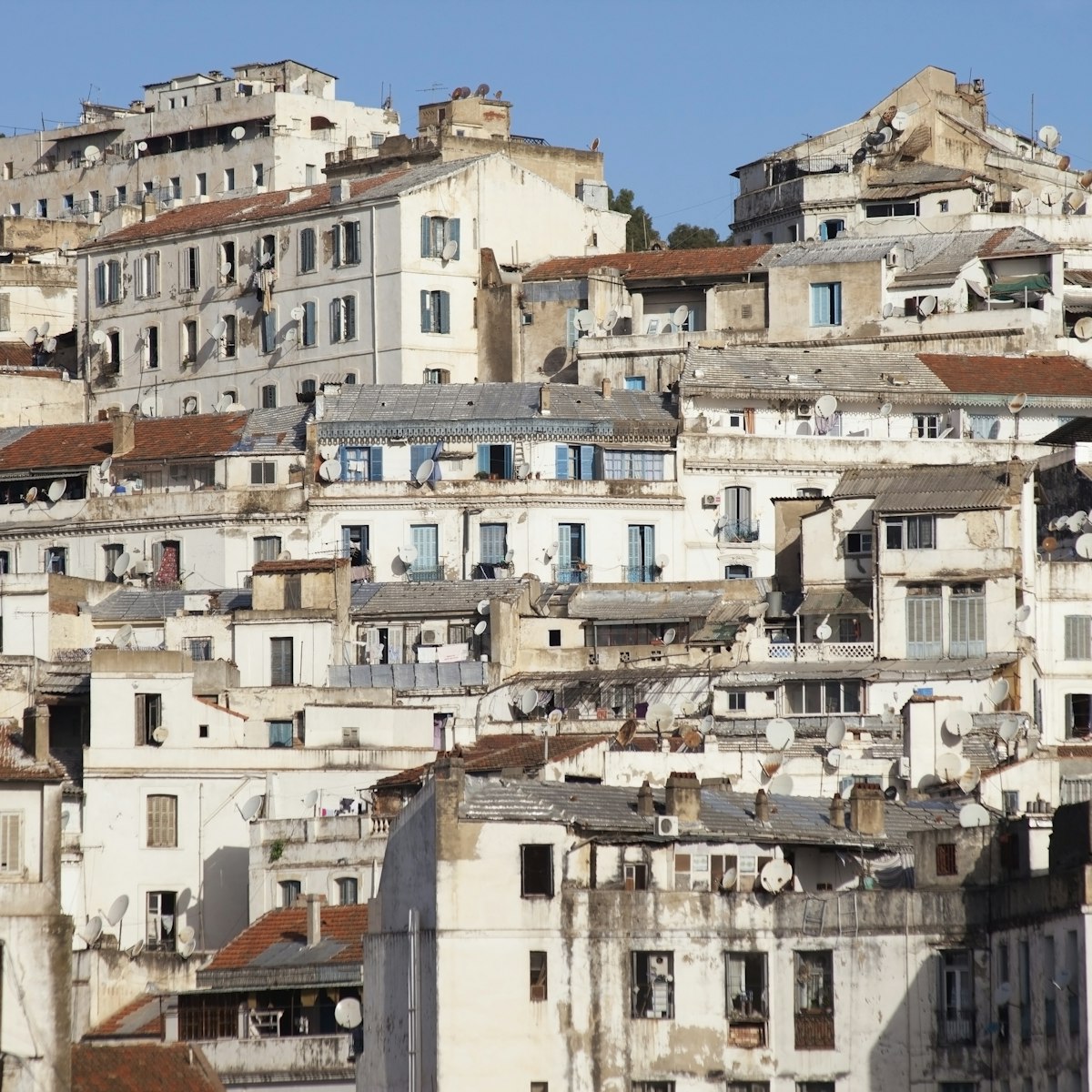Of all the mosques in central Algiers, the Djemaa Ketchoua has had the most turbulent history. Its date of construction is estimated as being around the beginning of the 17th century. Its name translates as place or plateau of goats, a reminder of the time when this space – between the port and citadel – was open ground. The mosque was undergoing extensive renovations at the time of research.
It was remodelled in 1794 by Hassan Pasha, when he built his palace next door. The work is commemorated by a long inscription that begins: ‘What a beautiful mosque!’ Today it seems more unusual than beautiful, with its high steps, three-tiered minarets and part-tiled walls.
A plaque to the left of the great doors notes that on 5 July 1830 a cross was placed on top of the mosque, beginning more than 130 years of French occupation. During this time it served as the city’s cathedral and one of the centrepieces of the French-held city: French artists and sculptors decorated it; Emperor Napoleon III took Mass here in 1860; and the composer Saint-Saëns played the organ here in 1873. The building was reconsecrated as a mosque on 5 July 1962, 132 years to the day after it was converted to a church and just two days after General de Gaulle recognised independent Algeria.



